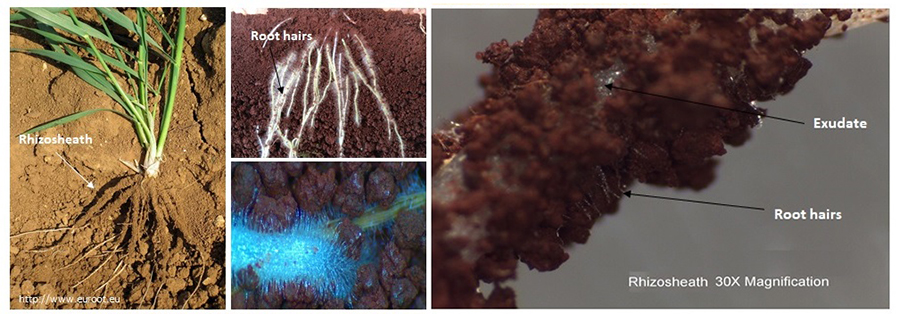Researchers at the University of Sydney are exploring how grain crops with a thicker ‘film’ of soil on their roots may better protect plants against dry conditions.
Dr Sheikh Rabbi, a postdoctoral research fellow at the University of Sydney, says understanding root architecture and soil–root interaction are potentially the new research frontiers in producing more-resilient, high-yielding crops.
Plants use their roots to explore the soil in search of moisture and nutrients, and the root–soil interface is where this ‘transaction’ takes place.
Rhizosheath research
Dr Rabbi, working with the University of Sydney’s Professor Iain Young, is exploring the soil that sticks to roots of plants – initially chickpeas – when they are removed from the paddock. This is known as the rhizosheath (see Figure 1).
Figure 1: Rizosheath research

Source: Dr Sheikh Rabbi, University of Sydney
He is using three-dimensional X-ray microtomography imaging to examine the root–soil interface.
It is hoped a better knowledge of how roots interact with soil will allow plant breeders to develop varieties with improved water and nutrient uptake in dry conditions.
Dr Rabbi’s work, with co-investment from the University of Sydney and GRDC through the Australian Research Council’s Legumes for Sustainable Agriculture (LSA) Research Hub, has revealed new insights into drought-tolerance traits in chickpeas.
With a limited set of chickpea lines, he measured drought-tolerant and drought-sensitive chickpeas for their root growth rate, root hair length, root diameter, root exudates (compounds released by plants’ root tips), and the thickness of the rhizosheath.
He found the drought-tolerant lines had a thicker rhizosheath than the drought-sensitive lines.
“The drought-tolerant lines also produced rhizosheaths that were more porous and slow-wetting, which is useful for channelling water around roots in dry conditions,” he says.
Dr Rabbi says the research will help to quantify the root traits associated with chickpea drought tolerance so breeders can use this knowledge to develop more water-efficient varieties in the future.
He next plans to test this concept on wheat and lupins to investigate whether they too develop thicker and more porous rhizosheaths in water-limited environments.
Root exudates
In other work, Dr Rabbi has looked at the compounds found in the root zone of chickpeas and the different communities of microbes that inhabit them.
“There are 65 different compounds, known as exudates, that chickpea roots release into the soil that can either improve or inhibit microbial activity, or mobilise water and nutrients around the root zone,” he says.
“When we looked at the biochemical parameters or the metabolic profile of the root exudates in drought-tolerant chickpea rhizosheaths, they were different to drought-sensitive chickpea rhizosheaths.”
Soil microbes
Dr Rabbi has also explored the different soil microbes associated with drought-tolerant chickpeas.
“For example, the bacteria Actinomycetes appear ‘happier’ in the rhizospheres of drought-tolerant chickpeas than drought-sensitive chickpeas,” he says.
His work is just one part of wider integrated research efforts at the LSA Research Hub investigating the interaction between the physical architecture of roots, the microbes found around them and the substances that roots and microbes exude into the soil.
The knowledge and data generated is hoped to arm crop breeders and inoculant developers with new ways to secure grain production in water-limited conditions.
More information: Sheikh Rabbi, 02 9351 1825, sheikh.rabbi@sydney.edu.au

























































